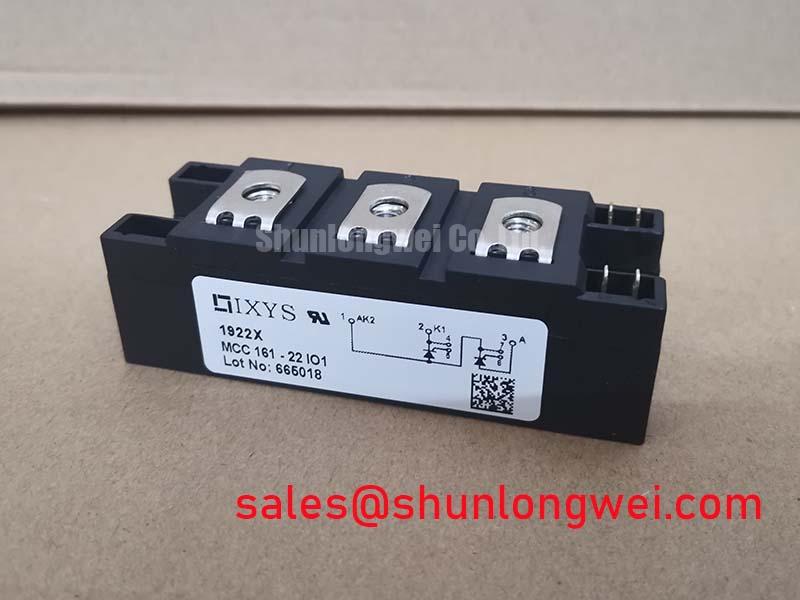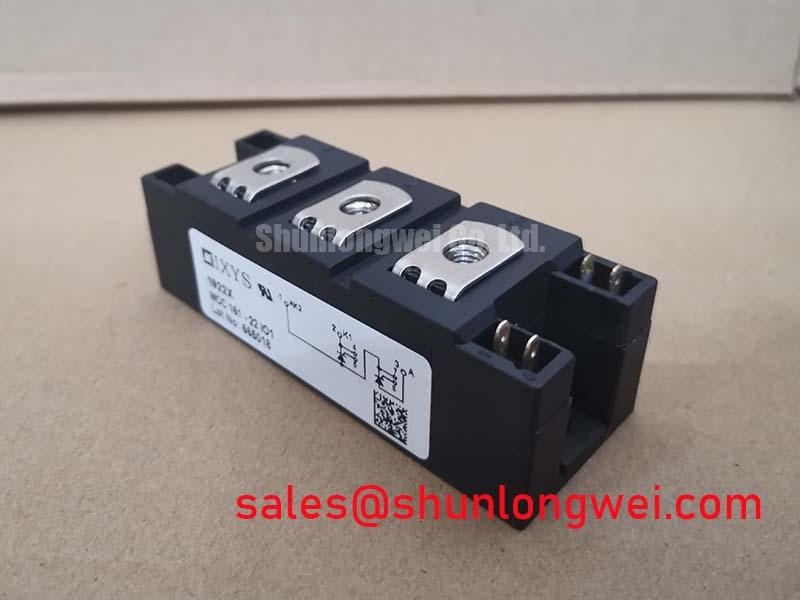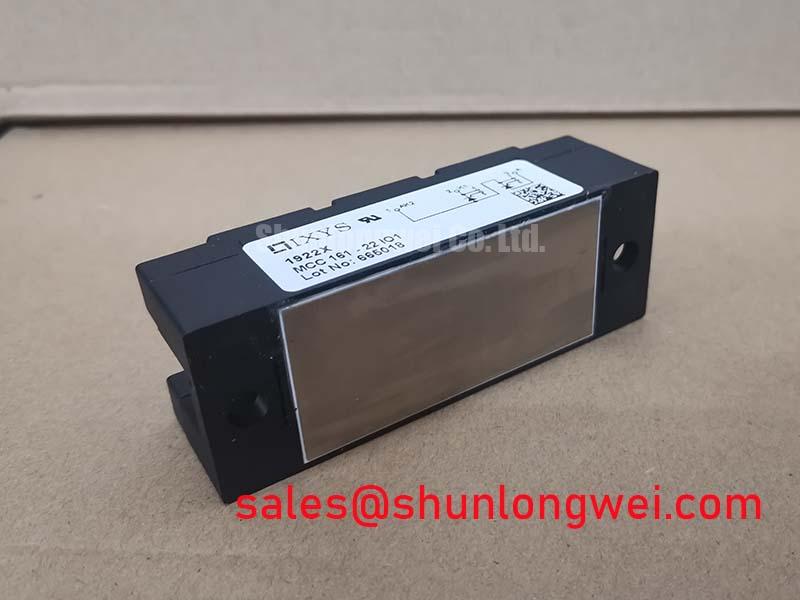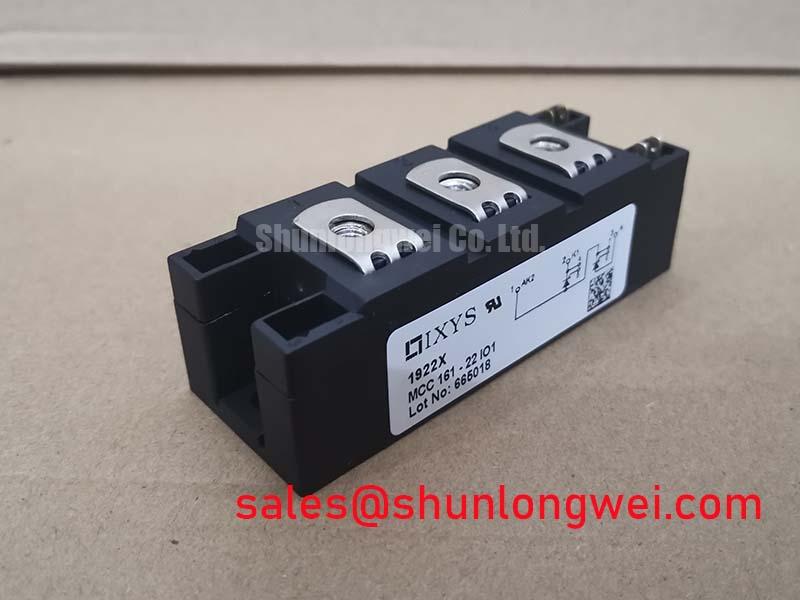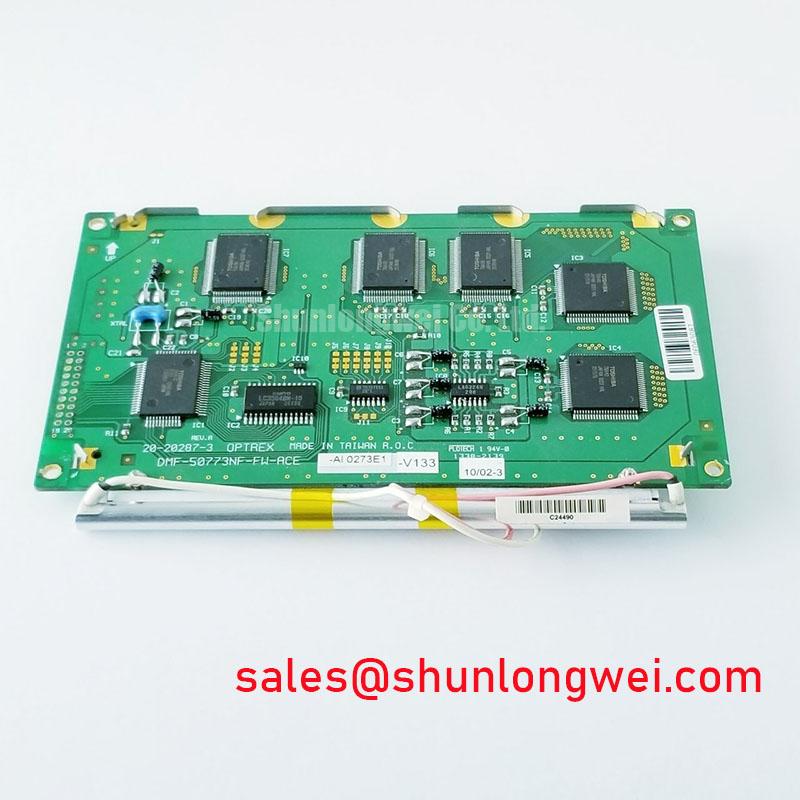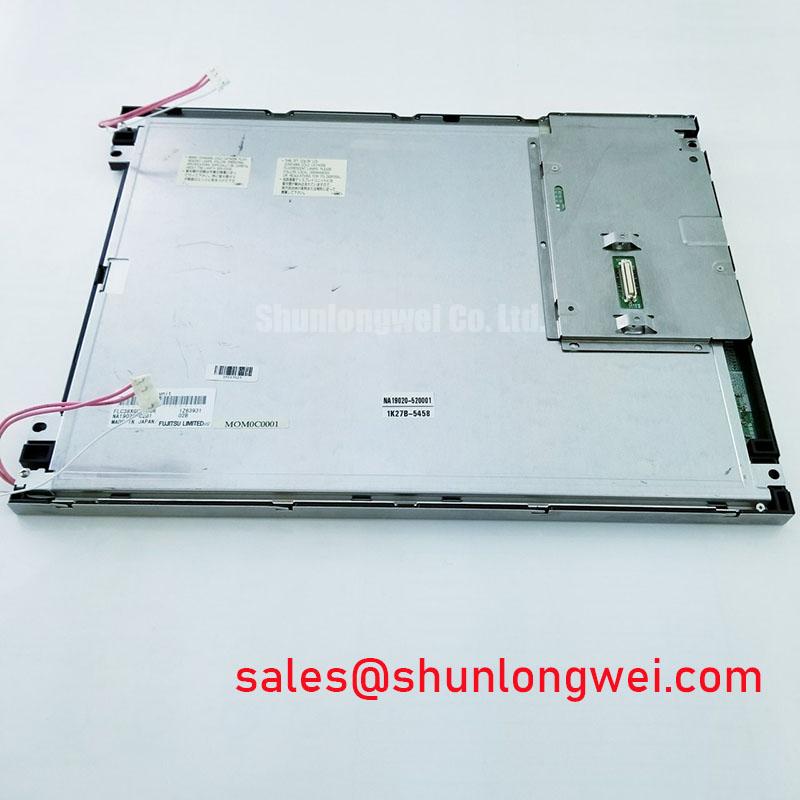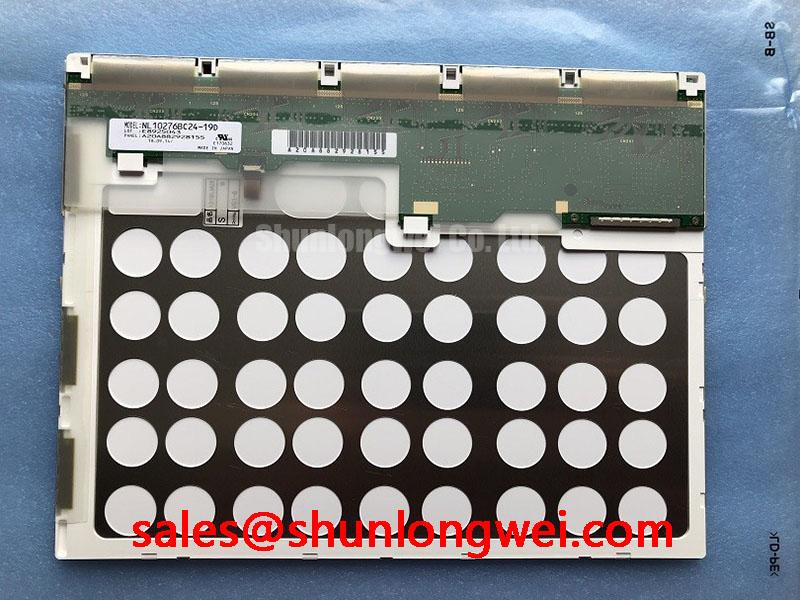Littelfuse MCC161-22IO1: Engineering for Thermal Reliability
A Technical Overview of the MCC161-22IO1 Thyristor/Diode Module
The Littelfuse MCC161-22IO1 Thyristor/Diode Module is engineered to provide a robust foundation for power control systems where long-term operational stability is critical. With its exceptional voltage headroom and optimized thermal pathway, this common cathode module facilitates precise and reliable power regulation. Key specifications include: 2200V | 162A | Rth(j-c) 0.24 K/W. This design delivers two primary engineering benefits: superior thermal management and enhanced electrical safety margins. The module directly addresses how to ensure predictable performance under heavy loads by incorporating planar passivated chips, which maintain stable blocking characteristics across a wide temperature range, mitigating a common point of failure in less robust designs.
Decoding the Architecture for Thermal Stability
The long-term performance of any power module is intrinsically linked to its internal construction and its ability to manage heat. The MCC161-22IO1 is built on a foundation of technologies chosen specifically to enhance thermal and electrical stability.
Planar Passivated Chips
At the core of the device are planar passivated chips. This manufacturing process creates a stable junction that is less susceptible to environmental contaminants and exhibits lower leakage currents, particularly at elevated temperatures. For a system designer, this translates into more predictable performance over the component's lifetime and a reduced risk of thermal runaway, a critical factor in high-uptime industrial applications.
Direct Copper Bonded (DCB) Substrate
The module utilizes a ceramic DCB substrate, which provides excellent electrical isolation while ensuring a highly efficient thermal path from the semiconductor chips to the module's baseplate. What is the primary benefit of its high electrical isolation? It allows for safe operation in systems with high potential differences and simplifies compliance with safety standards, with a V_ISOL rating of 3000V~.
MCC161-22IO1 Parameters for System Design
Evaluating the MCC161-22IO1 requires a focus on the parameters that directly influence its integration and reliability within a power system. The following table highlights key specifications and their direct engineering significance.
| Parameter | Value | Engineering Significance |
|---|---|---|
| V_RRM / V_DRM | 2200 V | Provides substantial voltage margin for applications on 480V and even 690V AC lines, protecting against transients and improving overall system robustness. |
| I_T(AV) / I_F(AV) (T_C = 85°C) | 162 A | Defines the average forward current capability for both the thyristor and diode at a typical operating case temperature, serving as a primary rating for load calculations. |
| R_thJC (Per device) | 0.24 K/W | Indicates an extremely efficient thermal path from the junction to the case. A low thermal resistance is like a wide, clear highway for heat, allowing it to escape quickly. This enables cooler operation, higher power density, or the use of a smaller heatsink. For deeper insights on thermal performance, review our guide on Why Rth Matters: Unlocking IGBT Thermal Performance. |
| V_T0 / V_F0 (Thyristor / Diode) | 0.89 V / 0.88 V | The threshold voltage is a key parameter for calculating conduction losses. These low values contribute to reduced power dissipation during operation, directly impacting system efficiency. |
| V_ISOL | 3000 V~ (50/60 Hz, RMS, t=1min) | Guarantees high electrical isolation between the active terminals and the mounting baseplate, crucial for safety compliance and preventing ground faults in high-power equipment. |
Download the Datasheet for Complete Specifications
Application Arenas Where Thermal Integrity is Key
The MCC161-22IO1 is designed for power conversion and control applications where reliable performance under demanding thermal and electrical conditions is paramount. Its specific common cathode configuration makes it particularly well-suited for controlled rectification and AC power control circuits.
- AC Motor Soft Starters: By controlling the firing angle of the thyristor, the module can gradually ramp up voltage to large AC motors, reducing mechanical shock and inrush current. The module's thermal capacity is essential for absorbing the initial power dissipation during the startup phase.
- Controlled Rectifiers: In applications like battery chargers and DC power supplies, this module can function as a half-controlled single-phase or three-phase bridge, providing a regulated DC output.
- AC Static Switches and Contactors: For high-duty cycle switching of AC loads, such as in industrial heating or lighting control, the module offers a solid-state alternative to mechanical contactors, with the low thermal resistance ensuring longevity.
- Power Supplies for Welding: The precise control offered by the thyristor is beneficial in welding power supplies, where managing the power arc is critical for quality. For systems requiring higher current handling, the related MCC200-16IO1 provides similar voltage characteristics with increased capacity.
For AC controllers on 480V lines that require robust thermal headroom, the MCC161-22IO1's 2200V rating and 0.24 K/W thermal resistance establish a foundation for highly dependable system design.
Data Points for Module Evaluation
When selecting a power module, it is useful to position its key specifications against those of other components to understand its intended design space. The following is a factual data comparison to aid in the engineering evaluation process. This data is provided to empower your decision-making, not to suggest a specific choice.
Scenario: Evaluation for a 480V AC Soft Starter Application
- Littelfuse MCC161-22IO1:
- V_DRM: 2200 V
- I_T(AV): 162 A (@ 85°C)
- R_thJC: 0.24 K/W
- Configuration: Thyristor/Diode
- Alternative Thyristor/Thyristor Module (Typical 1600V Class):
- V_DRM: 1600 V
- I_T(AV): ~160 A (@ 85°C)
- R_thJC: ~0.27 K/W
- Configuration: Thyristor/Thyristor
Data Interpretation for Your Assessment: The MCC161-22IO1 offers a significantly higher voltage rating (2200V vs. 1600V), providing a much larger safety margin against line transients, a key aspect of long-term reliability. Its slightly lower thermal resistance suggests a more efficient heat extraction capability, potentially allowing for more compact heatsink designs or higher operational reliability at the same current level. The Thyristor/Diode topology is ideal for cost-effective controlled rectifier designs where a freewheeling path is inherent.
The Strategic Value of Predictable Thermal Behavior
In today's industrial landscape, the pressure to increase power density while simultaneously enhancing system uptime has placed a spotlight on thermal management. Components that exhibit predictable thermal behavior, like the Littelfuse MCC161-22IO1, offer a distinct strategic advantage. A well-defined and low Thermal Resistance is not just a number on a datasheet; it is a direct enabler of more compact, cost-effective, and reliable end-products. It allows engineers to move beyond over-engineering cooling solutions and instead design thermal systems with precision, confident that the core power component will perform as specified. This predictability is foundational to achieving longer mean time between failures (MTBF) and reducing the total cost of ownership.
In-Field Performance: A Glimpse into Real-World Deployment
While specific customer deployments are proprietary, the engineering principles embodied in the MCC161-22IO1 are consistently applied in demanding field applications. For instance, in remote pumping stations, soft starters using modules with these characteristics are subjected to wide ambient temperature swings and inconsistent power quality. The high voltage headroom (2200V) provides resilience against line sags and swells, while the efficient thermal design ensures the controller can reliably start high-inertia pumps without overheating, even during periods of high ambient temperature. This level of built-in robustness minimizes the need for costly field service interventions, a critical consideration in infrastructure projects. This mirrors the challenges discussed in our analysis of preventing failures in power modules.
Engineering Questions on the MCC161-22IO1
1. What is the primary benefit of the 2200V rating in a 480V AC system?A 480V RMS AC line has a peak voltage of approximately 679V. While a 1200V or 1600V rated device is often sufficient, the 2200V rating of the MCC161-22IO1 provides a significantly larger safety margin. This is crucial in industrial environments where inductive load switching, lightning strikes, or grid instability can generate high-voltage transients that could destroy lower-rated components.
2. How does the R_thJC of 0.24 K/W impact heatsink selection?A low thermal resistance means that for every watt of power dissipated as heat, the temperature difference between the semiconductor junction and the module case is only 0.24°C. This high efficiency allows designers to either use a smaller, less expensive heatsink to achieve a target junction temperature or run the device at a higher current with a standard heatsink. This directly answers the engineer's need for optimizing thermal design for cost and space.
3. Can the MCC161-22IO1 be used for a three-phase controlled bridge?Yes, three MCC161-22IO1 modules can be configured to create a three-phase half-controlled bridge rectifier. Each module would handle one phase, with the thyristors providing the controlled switching and the diodes serving as the return path, creating a cost-effective and robust solution for DC motor drives or power supplies.
4. What does "Planar Passivated Chips" mean for long-term reliability?Passivation is the process of creating a protective layer (typically silicon dioxide or nitride) over the semiconductor junction. A "planar" process achieves this on a flat surface. This layer shields the sensitive junction area from electrical and environmental stresses, significantly reducing long-term degradation mechanisms like ion migration. The result is a device with more stable blocking voltage and lower leakage current over many years of operation.
5. Is the common cathode configuration a limitation?The common cathode configuration is not a limitation but a design choice that optimizes the module for specific circuits. It is ideal for circuits where two devices share a common negative rail, such as in certain AC controllers and controlled rectifiers. It simplifies the busbar layout and can reduce stray inductance compared to using two discrete components.
From a design perspective, the MCC161-22IO1 represents a component where performance specifications are directly tied to tangible system-level advantages. Looking ahead, the ability to accurately model thermal performance based on such reliable datasheet values will become even more critical as simulation-driven design cycles shorten. This module provides the clear, dependable data needed to optimize not just for today's requirements, but for the next generation of more compact and efficient power conversion systems.

